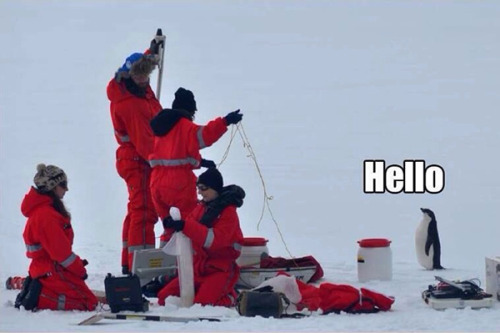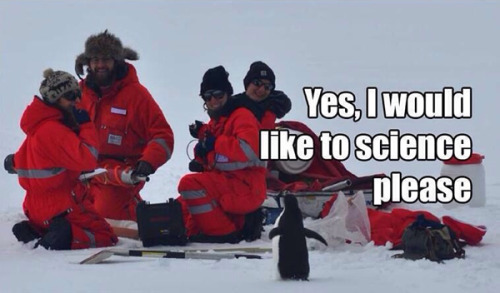They Call Me The Bug Whisperer. Because I Whisper To Bugs
they call me the bug whisperer. because i whisper to bugs
More Posts from Fandomsandfoxlore and Others
it used to be 2007 you know
Introductions & Housekeeping

Written by Franz Kafka & Sylvia Plath
Foreword by Fyodor Dostoevsky
"If you see Oscar Wilde, tell him that I love him"
INTRO:
Hi ✨️ I’m Savannah, I'm a full time PhD candidate. I read a lot of books and I write on occasion 😅
ABOUT:
● Born: 1997
● Pronouns: they/them
● Non-binary (femme lite)
● Disaster bi
● BPD & AUDHD
● Dachshund Mom/Cat Lady
● Anemic AF
● Aesthetically Catholic
● Eclectic Witch
● On again, off again vegan
LIKES & INTERESTS:
● Reading & Writing
● Journaling
● Anime & Manga, Webtoons & Manhwa
● Asian dramas (Kdramas, Jdramas, Cdramas)
● Crochet & knitting
● Podcasts
FEEL FREE TO DROP ME AN ASK OR DM IF YOU HAVE ANY QUESTIONS OR JUST WANT TO CHAT 😆 I LOVE CONNECTING WITH KINDRED SPIRITS ✨️
I'm going to *remembers suicide is often not a desire for death itself but rather an attempt to radically change one's life because the current state of being has become unbearable but the person can't think of any way to change it other than death* kill myself
Sai: I’d like to announce that Ino is no longer my girlfriend.
Ino: That is the worst possible way to tell people that we are engaged.
*
**
The Follow Up
Ino, drunk, pointing at Sai: That’s my boyfriend, bitches.
Sai: Your husband, Beautiful.
Ino: My Husband! Even better!
“I hope no great sorrow ever will come to you, Anne,” said Gilbert, who could not connect the idea of sorrow with the vivid, joyous creature beside him, unwitting that those who can soar to the highest heights can also plunge to the deepest depths, and that the natures which enjoy most keenly are those which also suffer most sharply.
and
“She will love deeply—she will suffer terribly—she will have glorious moments to compensate.” (Emily of New Moon)
Researching the Women of the Sea, the free-diving haenyeo women.
I first discovered these haenyeo women while researching another free-diver, Kimi Werner, as she traveled to dive with them, searching for answers around her worth as a diver, as a woman, as a new/ soon to be mother. She was welcomed into this diving circle with warmth and wisdom. They spoke of their work, daily difficulties, pregnancies and births out on the boats, the value and freedom they experience being the first accepted working mothers of their culture. I thought this was a perfect research piece to bring into my project.


In an article I found, the writer, Luciano Candisani, writes:
“… the sea. I am fascinated by the people whose livelihoods depend on it, and I have come to Jeju to learn more about a traditional way of life that, like many such cultures, is at risk of dying out. At the age of 90, Hyun Seon-jik still spends most of her time in the sea, out beyond the waves of Samdal-ri beach. She swims a five-hour shift with her fellow divers, searching for the seafood she collects for trading. Only shells that have grown over 7cm in size are taken; anything smaller is returned to the water to grow.”
This tradition of diving stems from the 17th century off the coast of Jeju Island, South Korea. Both men and women used to dive with just the air in their lungs and swim down where they would harvest the ocean floor. However, when abalone was confiscated for tax reasons, the male divers were outraged, leaving en mass, searching for other work. The women were left, turning as before to the sea for survival. After each dive the women would return to their homes, talking in their own haenyeo dialect. They began to practice “then-marginalised shamanic rituals, brought to Korea by nomadic peoples from Siberia and Manchuria around 6,000 years ago. With offerings to nature gods, they would thank these animist entities for the copious sea life received, asking for protection against strong underwater currents, storms, and marine predators.” Today we can see this systematic, unique, cohesive culture, founded and managed by the women themselves, in a society ruled by state ideologies holding that women should be subservient to men.
Throughout history, the haenyeo tradition has remained strong, although now, currently, there are only around 4000 remaining haenyeo divers, as young women do not want to take on the lifestyle of their grandmothers. However, there is a wellness and peacefulness in the intensity of these diving women. They don’t want their daughters to have to live this way, but, as stated in the article, the haenyeo are closer than sisters. The sea is their life and joy.
I was really touched when researching these women decided to create a two part linocut of them in my graphic media section. (The second panel is currently drying in the print room.)




Sources:
Oh we’re going there for real! Yoshiki being attached to ‘HIKARU’ because he sees himself in him, identifying with the label “monster” because of his alienation and internalized homophobia from growing up queer in a rural village……!!!



-
 milkycarroway liked this · 2 months ago
milkycarroway liked this · 2 months ago -
 foxgirlwitch reblogged this · 2 months ago
foxgirlwitch reblogged this · 2 months ago -
 foxgirlwitch liked this · 2 months ago
foxgirlwitch liked this · 2 months ago -
 wizardofanarchy reblogged this · 2 months ago
wizardofanarchy reblogged this · 2 months ago -
 wizardofanarchy liked this · 2 months ago
wizardofanarchy liked this · 2 months ago -
 iamwhatitorture reblogged this · 2 months ago
iamwhatitorture reblogged this · 2 months ago -
 catwithawizardhat reblogged this · 2 months ago
catwithawizardhat reblogged this · 2 months ago -
 catwithawizardhat liked this · 2 months ago
catwithawizardhat liked this · 2 months ago -
 huskarl-community-center reblogged this · 2 months ago
huskarl-community-center reblogged this · 2 months ago -
 lookinatfrogs liked this · 2 months ago
lookinatfrogs liked this · 2 months ago -
 hamishcat437 reblogged this · 2 months ago
hamishcat437 reblogged this · 2 months ago -
 hamishcat437 liked this · 2 months ago
hamishcat437 liked this · 2 months ago -
 cecildennis reblogged this · 2 months ago
cecildennis reblogged this · 2 months ago -
 star-prinxe reblogged this · 2 months ago
star-prinxe reblogged this · 2 months ago -
 sp-ace11 liked this · 2 months ago
sp-ace11 liked this · 2 months ago -
 grandcentralcity liked this · 2 months ago
grandcentralcity liked this · 2 months ago -
 i-am-the-plagu3 liked this · 2 months ago
i-am-the-plagu3 liked this · 2 months ago -
 pandacatxd liked this · 2 months ago
pandacatxd liked this · 2 months ago -
 detroitresident reblogged this · 2 months ago
detroitresident reblogged this · 2 months ago -
 idunno45 reblogged this · 2 months ago
idunno45 reblogged this · 2 months ago -
 idunno45 liked this · 2 months ago
idunno45 liked this · 2 months ago -
 thatll-do reblogged this · 2 months ago
thatll-do reblogged this · 2 months ago -
 dragondogerin liked this · 2 months ago
dragondogerin liked this · 2 months ago -
 dragondogerin reblogged this · 2 months ago
dragondogerin reblogged this · 2 months ago -
 m1dori-eyes liked this · 2 months ago
m1dori-eyes liked this · 2 months ago -
 mionko reblogged this · 2 months ago
mionko reblogged this · 2 months ago -
 mare-crisiums-manual-controls reblogged this · 2 months ago
mare-crisiums-manual-controls reblogged this · 2 months ago -
 lucyvaleheart reblogged this · 2 months ago
lucyvaleheart reblogged this · 2 months ago -
 goddessofthedawn reblogged this · 2 months ago
goddessofthedawn reblogged this · 2 months ago -
 goddessofthedawn liked this · 2 months ago
goddessofthedawn liked this · 2 months ago -
 cryptious reblogged this · 2 months ago
cryptious reblogged this · 2 months ago -
 teenageinternetprincess liked this · 2 months ago
teenageinternetprincess liked this · 2 months ago -
 cemeteryhound reblogged this · 2 months ago
cemeteryhound reblogged this · 2 months ago -
 cemeteryhound liked this · 2 months ago
cemeteryhound liked this · 2 months ago -
 ohlivish reblogged this · 2 months ago
ohlivish reblogged this · 2 months ago -
 tuhannestikirottua reblogged this · 2 months ago
tuhannestikirottua reblogged this · 2 months ago -
 topiaworld56 liked this · 2 months ago
topiaworld56 liked this · 2 months ago -
 operaticskeleton liked this · 2 months ago
operaticskeleton liked this · 2 months ago -
 xyl3m reblogged this · 2 months ago
xyl3m reblogged this · 2 months ago -
 raphthebirdman reblogged this · 2 months ago
raphthebirdman reblogged this · 2 months ago -
 raphthebirdman liked this · 2 months ago
raphthebirdman liked this · 2 months ago -
 evilhenchmenoffical liked this · 2 months ago
evilhenchmenoffical liked this · 2 months ago -
 waytooobsessedwithmcyt reblogged this · 2 months ago
waytooobsessedwithmcyt reblogged this · 2 months ago -
 neensies liked this · 2 months ago
neensies liked this · 2 months ago -
 8starshadow8 liked this · 2 months ago
8starshadow8 liked this · 2 months ago -
 lunala64 reblogged this · 2 months ago
lunala64 reblogged this · 2 months ago -
 raptorredd liked this · 2 months ago
raptorredd liked this · 2 months ago -
 litmepantsablaze reblogged this · 2 months ago
litmepantsablaze reblogged this · 2 months ago -
 litmepantsablaze liked this · 2 months ago
litmepantsablaze liked this · 2 months ago -
 pettycrustacean reblogged this · 2 months ago
pettycrustacean reblogged this · 2 months ago





